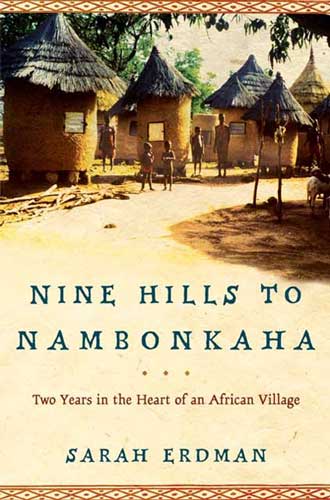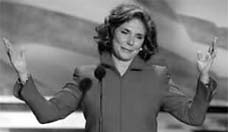
Sarah Erdman’s debut novel “Nine Hills to Nambonkaha” is characteristic of good literature, beginning in birth and ending in rebirth
Erdman’s ‘Nine Hills’ Pleases With Unique Approach
by: Vernon Ng
Staff Writer
Sarah Erdman’s debut novel “Nine Hills to Nambonkaha” is characteristic of good literature, beginning in birth and ending in rebirth. This book is highly recommended for anyone interested in African and Islamic culture, travel books or just plain, good reading.
This nonfiction book is written roughly as a series of diary entries and spans two years of Erdman’s time as a Peace Corps volunteer in Nambonkaha, a small Muslim village off the Cote D’Ivoire (a region in Africa).
In her capacity as a health care worker, she educates villagers on topics ranging from AIDS prevention to pregnancy.
From the beginning, the reader finds Erdman, a French literature graduate of Middlebury College, thrust unexpectedly into situations, like single-handedly delivering a baby with no prior experience in midwifery.
The arc of the book, however, is expected: By the end of her stay, Erdman transcends her call of duty and ends up changing the nature of the village and its inhabitants.
This certainly isn’t to say that the topics explored are overdone or mundane; Erdman’s story is very much worth telling and the grace and clarity of her prose allows for a refreshing read.
Even more central to the book’s success is its timeliness in dealing with cross-cultural issues.
Erdman is the first Westerner to visit the village since the last French colonists (presumably in the 1950s). Thus, African and American values are constantly thrown into relief and the boundaries of each culture are productively explored.
“Before [your arrival,] all we knew of Americans was Mike Tyson and the Baptists down the road,” a villager says. “One is a cannibal. The other thinks we’re cannibals.”
The social and religious themes Erdman explores are equally timely and timeless.
“He has come to a conclusion that all faiths merely describe different ways to love the same God,” Erdman writes of Sidibé, a Muslim government worker in Nambonkaha, after a theological discussion.
In this quiet way, Erdman advocates a cultural dialogue that is now more urgent than ever: one that is based on mutual respect.
There is also a very human quality in Erdman’s writing that suggests she has a deep understanding of the people around her.
“She spent nine weeks [hiding] from me and has finally decided she loves me the week that I’m leaving,” Erdman writes of Eloise, a child from her host family.
While reading Erdman’s book, V.S. Naipaul’s travel narrative of India, “An Area of Darkness,” constantly came to mind as a basis of comparison.
Unlike Naipaul’s narrative, which often verges on being racist, Erdman’s book deals with similar issues with an open mind.
Erdman is brilliant where Naipaul is lackluster. Erdman abandons the stale notion of Africa as a “dark continent” and portrays the people as dynamic; reading the compelling text, one starts to believe that these villagers aren’t very different from you or me.
However, the book is not without its faults. Erdman’s naivety and openness often translates into excessive self-consciousness and self-alienation.
“The specter of AIDS seems to hover over the crowd, but I wonder if anyone else senses it,” she observes at a funeral for a person whosecause of death is unknown, in a village where AIDS – as she later admits – is not as severe a threat as she had anticipated.
Still, “Nine Hills to Nambonkaha” is an overwhelming success, because of the candor and generosity that Erdman extends through her writing. The book itself is a great act of generosity on behalf of those individuals Erdman encounters.
©2004 New University Newspaper





